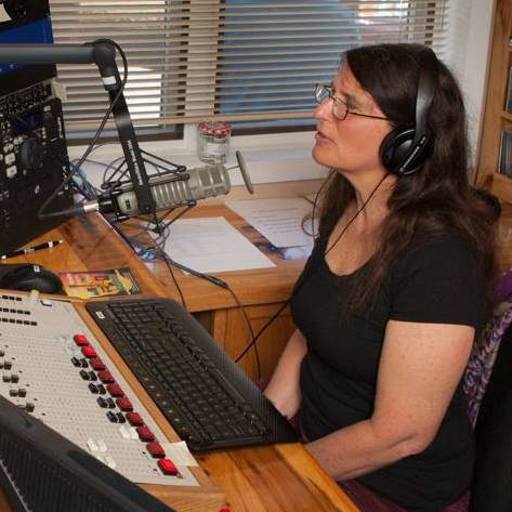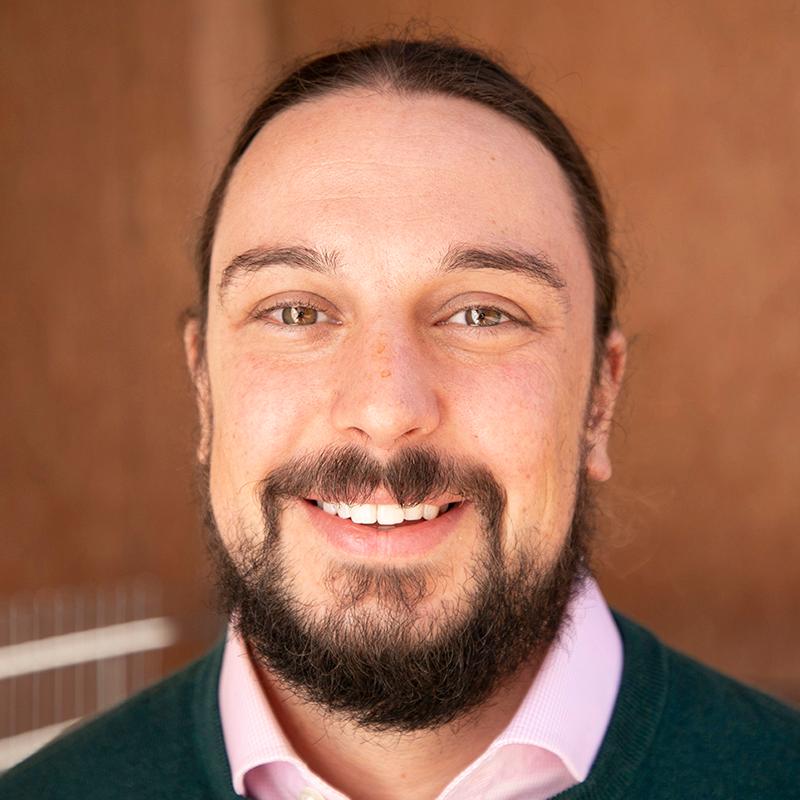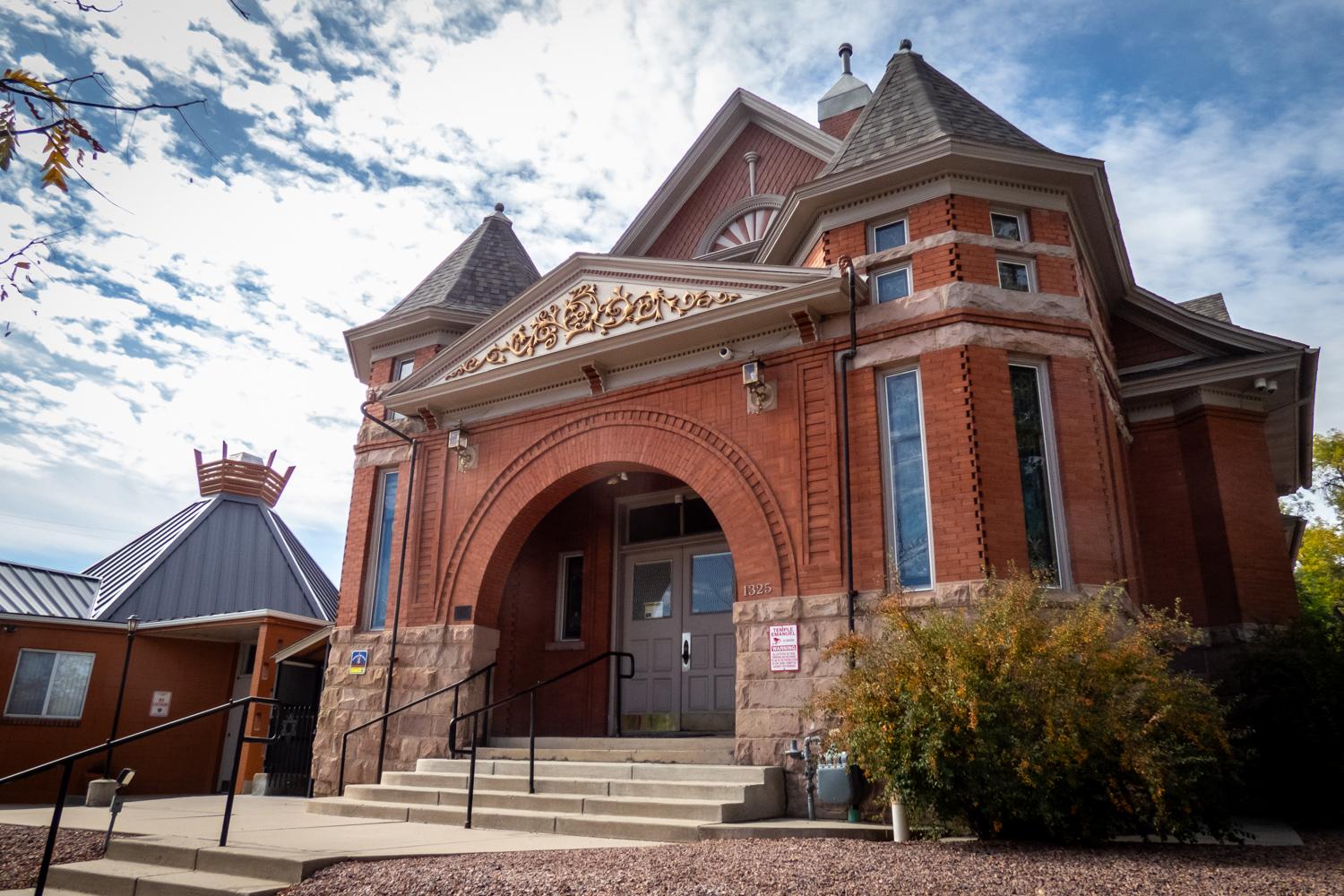
Sunlight illuminates a Star of David at Temple Emanuel on the north side of Pueblo. It's surrounded by radiant beams of color in a stained glass window. It’s the first thing you see when you enter the elegant red brick building that has stood as a testament to the resilience of the local Jewish community for 125 years.
Millennia-old observances of Jewish holidays continue at the synagogue, long called the “Little Jewelbox.” The congregation just celebrated Simchat Torah with joyful songs and dance. That's the cycle of Torah readings, ending and then beginning again.
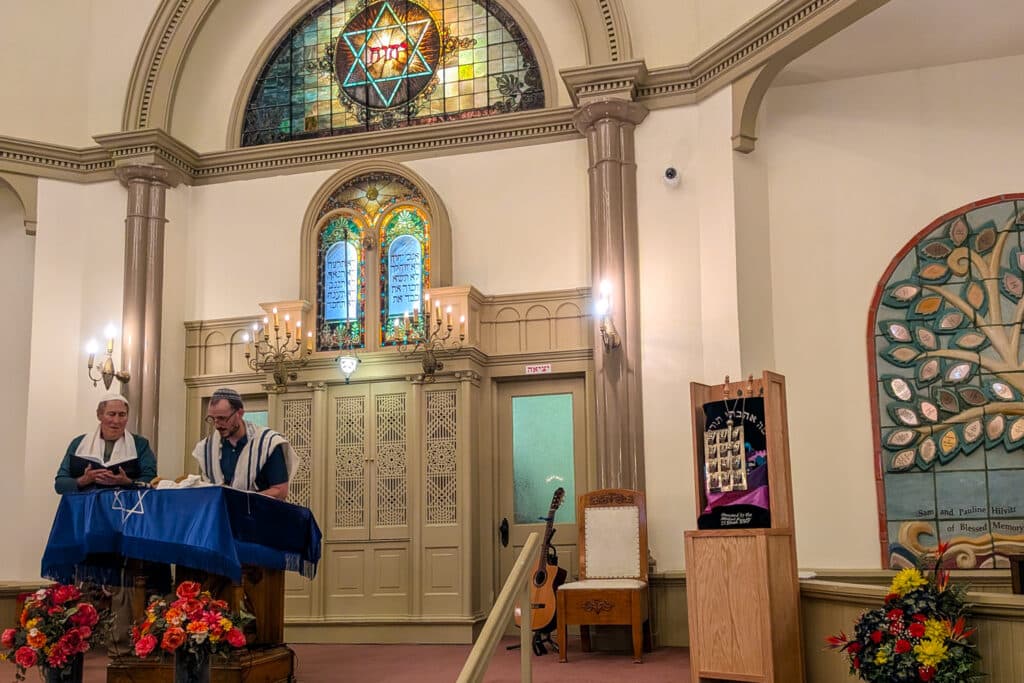
Each of the three Torahs–the sacred scrolls–at Temple Emanuel has a story. The temple’s board president, Micheal Atlas-Acuña, said the smallest one, covered in simple red velvet, is about 300 years old and is from Romania.
“The reason it's so small compared to the other ones,” he said, “is because the rabbis in Romania at the time were very mobile, and they couldn't carry around a Torah scroll that weighed 50 pounds. This one weighs 20 pounds, if that.”
Another was donated by a temple in Denver that was closing. That Torah is around 180 years old. The newest Torah was made in Israel in 2007. Each one is covered in velvet and topped with intricate silver crowns and other decorations.
They are all lovingly cared for and unrolled during services. A silver pointer is used to show the week’s reading, to help preserve the traditional parchment scrolls written in Hebrew.
Atlas-Acuña said about 35 families are currently members at Temple Emanuel, and at its highest membership there were about 65 families.
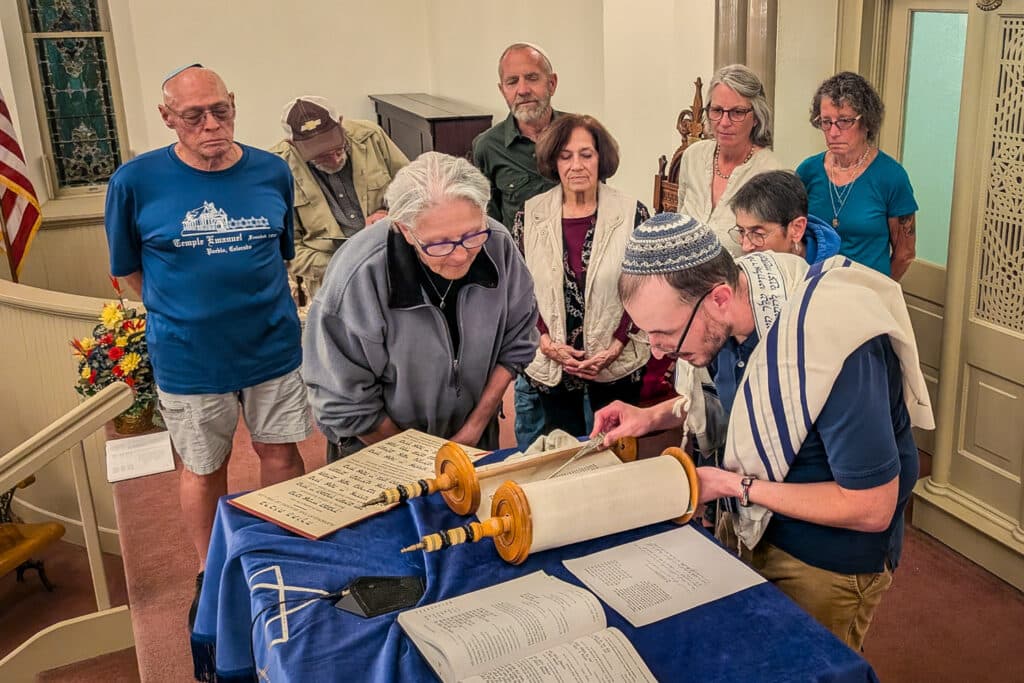
“The congregation believes strongly that the temple is not only the synagogue for the Jewish community,” Atlas-Acuña said, “but it also belongs to the citizens of Pueblo.”
The congregation can’t afford a full-time rabbi, so most Friday night Shabbat or Sabbath services are led by community members.
Atlas-Acuña related a story from a visiting rabbi, who told the congregation, “It's easy for me to be a Jew in Miami. The fact that you are still here–a small community–for as long as you've been here, is amazing.”
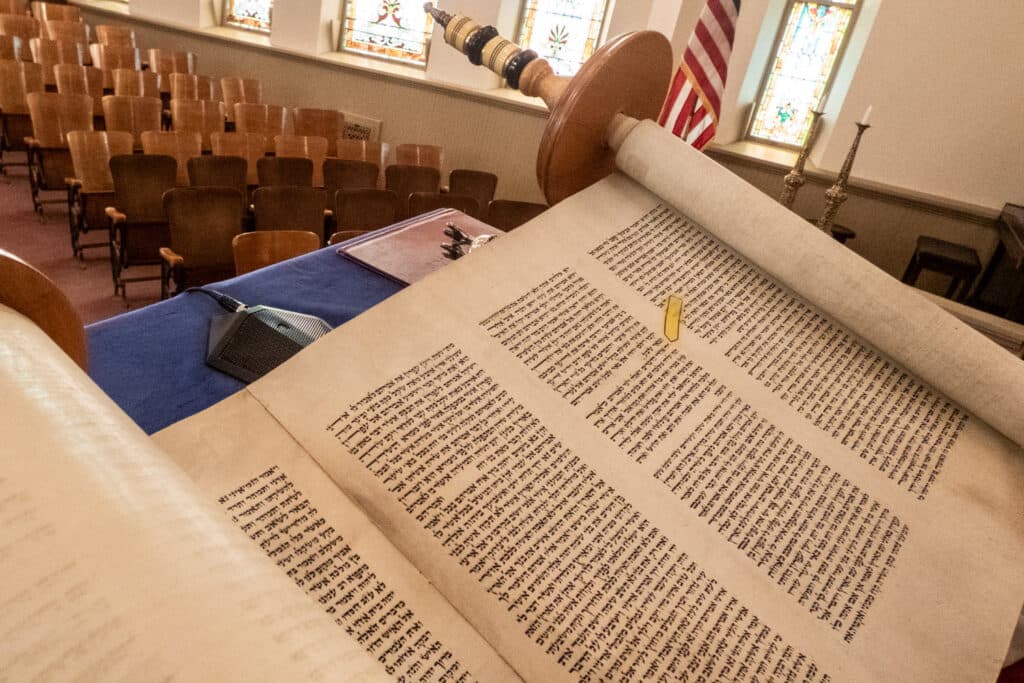
The temple, Atlas-Acuña said, was constructed in 1900 for about $5,500 and restored a few decades ago using both grants and funds raised locally. The stained glass windows were cleaned and the leading repointed, structural settling and cracks were repaired. Two formerly empty alcoves now hold books and historical photos.
“Everything's original,” Atlas-Acuña said, “nothing has been changed.” The wooden opera-style seating, complete with a wire holder for a hat, is still under each seat. Now they are waiting to see if their recent grant application for about $300,000 to create an accessible entrance is approved. Atlas-Acuña said that plan has gone through several iterations, and the cost has also increased.
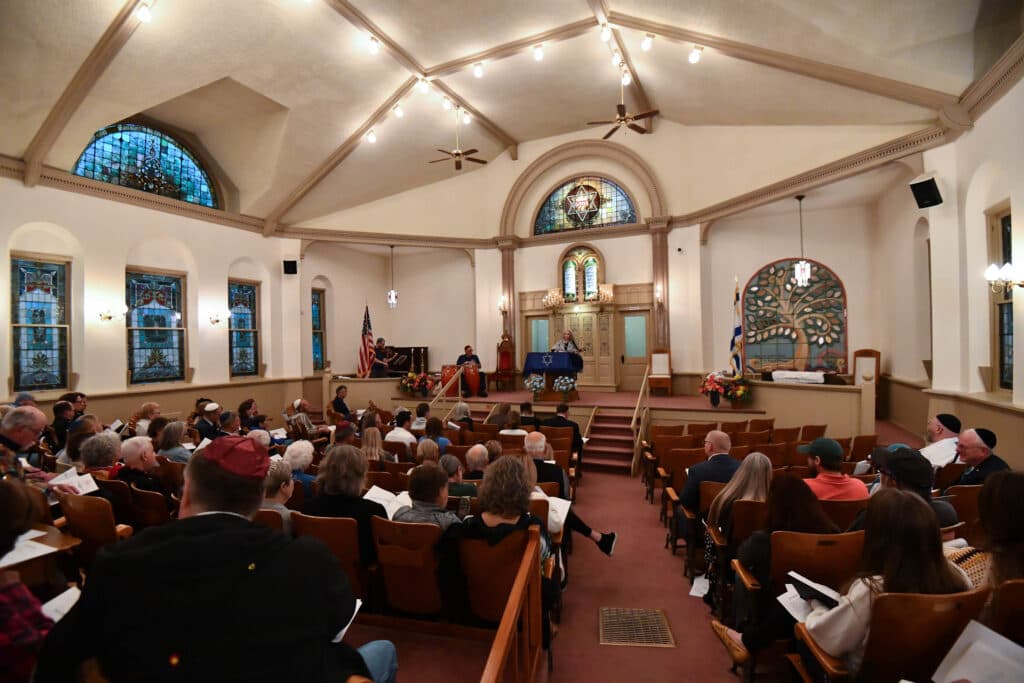
In its 125 years, Temple Emanuel has also seen some scary times, especially recently. In 2019, the FBI averted a plot by a white supremacist to blow the temple up. The following year, a woman broke into the congregation’s social hall next door and started a fire inside it. But the Pueblo community, and people from around the state, the nation and the world, stepped up to support the temple and that, Atlas-Acuña said, was a blessing.
When asked to reflect on the future of the temple and the congregation, Atlas-Acuña said, “If we …keep it solid, make it accessible, people are going to want to come here. You know that saying in that movie, ‘If you build it, they will come.’ That's what I see. We're going to keep this place going.”
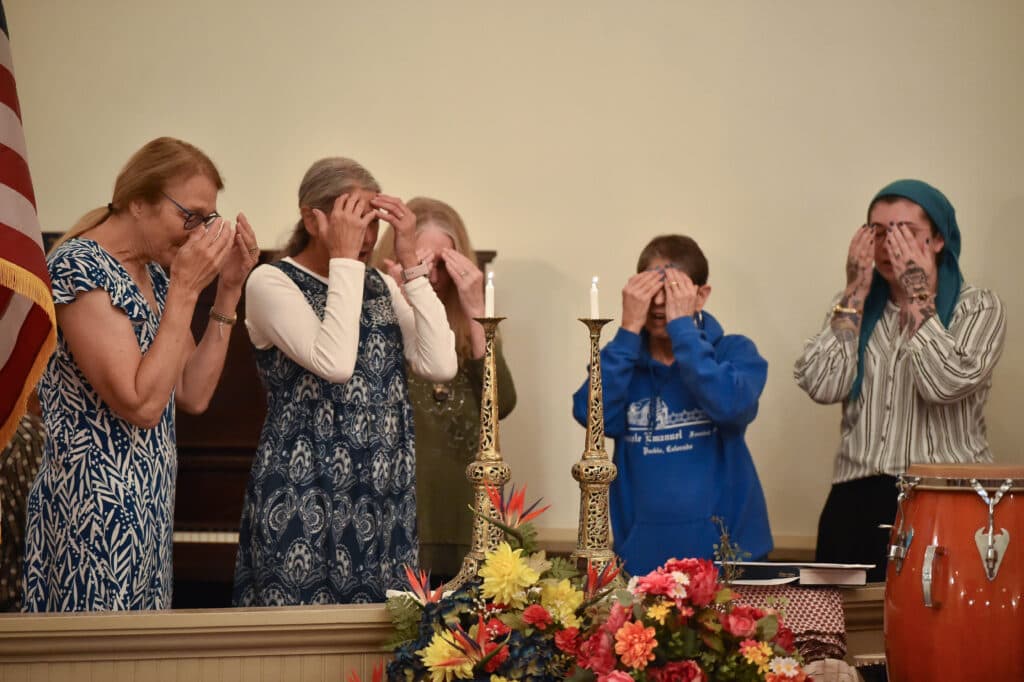
- White Supremacist Who Plotted Temple Emanuel Bombing Gets 19 Years In Federal Prison
- Overflowing Support At Pueblo Synagogue For First Shabbat Service Since Word Of Foiled White Supremacist Attack
- Iconic Pueblo temple seeks funds for wheelchair access
- Trinidad’s Temple Aaron’s National Historic Landmark designation nearly complete as Jewish New Year begins
